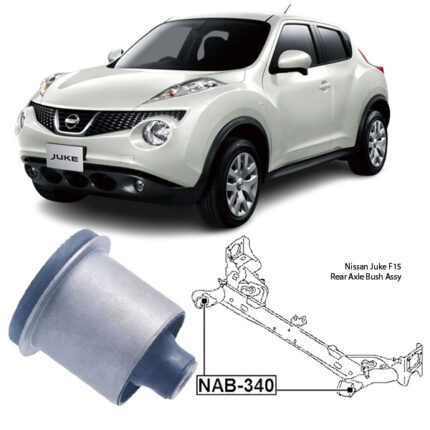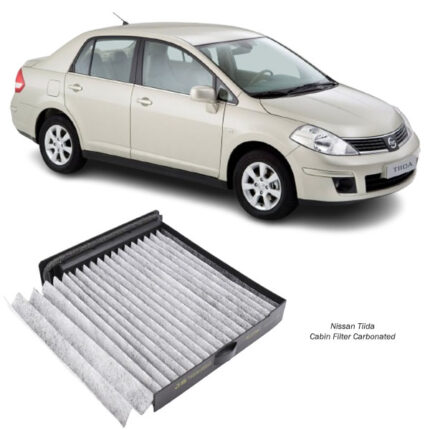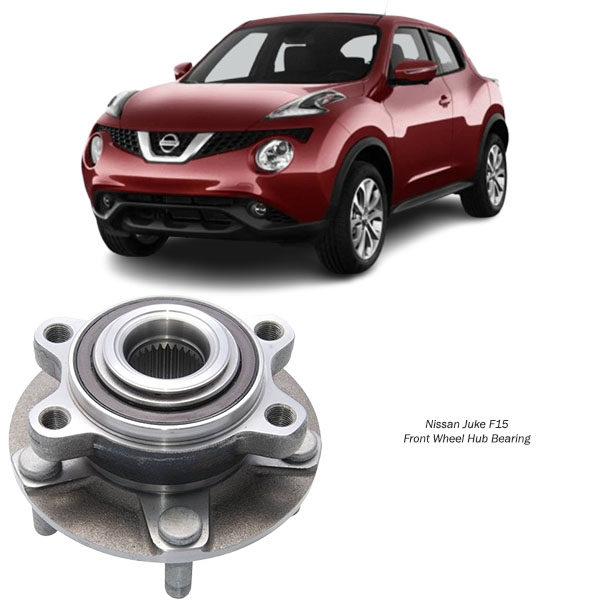Get Nissan Juke F15 Front Wheel Hub Bearing 40202-JG000 in Kenya
The Front Wheel Hub Bearing Assembly is a crucial component of your vehicle’s steering and suspension system. It supports the weight of the vehicle while allowing the wheels to rotate smoothly with minimal friction. Whether you’re driving on highways , rough roads , or making sharp turns, your wheel bearings ensure a quiet, stable, and safe ride.
In this guide, we’ll dive into everything you need to know about front wheel hub bearings, including their function, types, symptoms of failure, replacement process, and maintenance tips.
What is a Front Wheel Hub Bearing and How Does It Work?
The wheel hub bearing assembly consists of:
A hub that connects to the wheel and brake rotor.
A bearing that reduces friction, allowing smooth wheel rotation.
A housing that protects the bearing from dirt and debris.
The wheel bearing itself is a set of steel balls or rollers enclosed within a metal ring. It is lubricated with grease to minimize friction and allow smooth wheel movement.
Key Functions of the Front Wheel Hub Bearing:
Reduces Friction – Enables smooth wheel rotation with minimal resistance.
Supports the Vehicle’s Weight – Helps distribute the load evenly.
Enhances Steering Control – Ensures stability while turning and braking.
Provides a Smooth Ride – Reduces vibrations and road noise.
Protects the Wheel Assembly – Prevents excessive wear on tires, brakes, and suspension components.
Types of Front Wheel Hub Bearings
There are different types of wheel bearings, each designed for specific vehicle applications.
Ball Bearings
-
Most common type used in passenger vehicles.
-
Uses steel balls to reduce friction.
-
Provides a smooth and quiet ride.
Pros: Durable, cost-effective, works well in various conditions.
Cons: Not ideal for heavy-duty applications.
Roller Bearings
-
Uses cylindrical rollers instead of balls.
-
Handles higher loads better than ball bearings.
Pros: Ideal for trucks and heavy-duty vehicles.
Cons: Slightly more friction than ball bearings.
Tapered Roller Bearings
-
Conical rollers positioned at an angle.
-
Designed for both radial (side-to-side) and axial (up-and-down) loads.
Pros: Common in 4WD and off-road vehicles.
Cons: Requires precise lubrication and installation.
Sealed Bearings
-
Pre-lubricated and enclosed in a protective housing.
-
Maintenance-free and resistant to dirt & debris.
Pros: Long lifespan, no need for greasing.
Cons: Cannot be serviced; must be replaced when worn out.
Symptoms of a Bad Front Wheel Hub Bearing
Wheel bearings wear out over time due to constant use, road conditions, and exposure to dirt, water, and debris. Here are some warning signs of a failing front wheel hub bearing:
Grinding or Growling Noise
A humming, grinding, or roaring noise that gets louder as you accelerate.
Steering Wheel Vibration
A worn-out bearing can cause the steering wheel to shake, especially at high speeds.
Uneven Tire Wear
Damaged wheel bearings cause the wheel to wobble, leading to irregular tire wear.
Loose or Wobbly Wheel
If the wheel feels loose when jacked up, the hub bearing may be worn out.
ABS Malfunction Warning Light
If your vehicle has ABS (Anti-lock Braking System), a faulty hub bearing may trigger a warning light.
Pulling to One Side
A failing wheel bearing can cause the car to pull to one side, especially when braking.
Causes of Front Wheel Hub Bearing Failure
Water & Dirt Contamination – Moisture and debris damage the bearing’s lubrication.
Excessive Load – Carrying heavy loads puts extra strain on the bearings.
Rough Road Conditions – Potholes, bumps, and off-road driving accelerate wear.
Lack of Lubrication – Some older bearings need periodic greasing.
Improper Installation – Over-tightening or under-tightening can lead to premature failure.
How to Replace a Front Wheel Hub Bearing Assembly
Tools Needed:
Jack & Jack Stands – To lift the vehicle safely.
Socket Wrenches & Torque Wrench – To remove and tighten bolts.
Hammer & Pry Bar – To assist in removing old parts.
New Wheel Hub Bearing Assembly – Ensure the correct fit for your vehicle.
Step-by-Step Replacement Guide:
Lift the Vehicle – Use a jack to raise the front of the car and secure it with jack stands.
Remove the Wheel – Take off the wheel to access the hub assembly.
Remove the Brake Caliper & Rotor – Unbolt and set aside the caliper and rotor.
Detach the Old Hub Bearing – Unbolt the hub assembly and carefully remove it.
Install the New Hub Bearing – Secure the new hub assembly in place.
Reassemble the Brake Components – Attach the brake rotor and caliper.
Lower the Vehicle – Carefully bring the car back down.
Test Drive – Check for noise, vibration, and handling issues.
Tip: Always replace both front hub bearings together for even performance!
How to Maintain Front Wheel Hub Bearings
Inspect Bearings Regularly – Check for noise, play, and leaks.
Avoid Driving Through Deep Water – Water contamination shortens bearing life.
Rotate & Balance Tires – Helps prevent excessive strain on the hub.
Use High-Quality Bearings – OEM or reputable aftermarket brands last longer.
Follow Proper Installation Procedures – Avoid overtightening or misalignment.
Follow us on Facebook for more parts.




